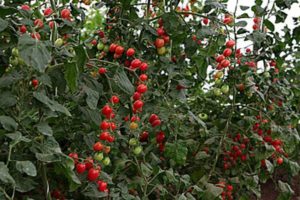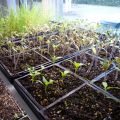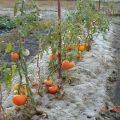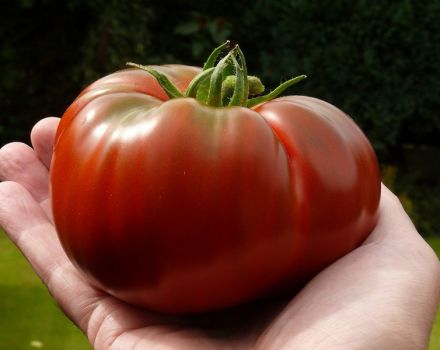Characteristics and description of the tomato variety Linda
Tomato Linda f1 is ideal for people who do not have the time or desire to deal with the beds. This is due to the fact that no more than ten bushes can be planted on one square meter. Of course, such a variety is not suitable for large-scale cultivation, since this will require rather large land plots. But, before making a decision, you need to study the description of the variety.
Features of the variety
Plants of this variety are unpretentious and capable of growing over a long period. Moreover, the fruits ripen quite quickly. So, if you sow tomato seeds in late spring, then in the middle of summer you can harvest the first crop from the bush.
Linda tomato is a low-growing dwarf plant, the height of which does not exceed 30 cm. The bush has a compact size and a dense stem. There is relatively little foliage. A characteristic feature of this variety is that dense fruits are placed in a bunch. They are round in shape and can easily withstand temperature changes. They are also unpretentious in lighting. But, it is worth noting that if there is enough light, then much more ovaries will form on the bush.
Interesting: Tomato Linda is very popular due to the fact that plants are highly resistant to various diseases that are inherent in nightshade crops.
An adult plant is a small bush that is dotted with small tomatoes. The average weight of the fruit is close to 30 grams. You can collect them until the end of September. The fruits are versatile and can be used to make different salads. They are also suitable for pickling and canning.
I grew Linda tomatoes on balconies in pots or boxes. They are not afraid of unprotected ground. This characteristic explains the popularity of tomatoes among the population.

Advantages and disadvantages
Among the advantages of this variety, it is worth highlighting:
- unpretentiousness in growing and care;
- good productivity;
- the ability to grow in a confined space, which is available due to the small size of the bush;
- good taste, which allows you to use the fruit for cooking different dishes;
- do not undergo many diseases and easily tolerate a drop in temperature;
As for the disadvantages, at the moment there are no such noted, as indicated by consumer reviews.
How to sow correctly
Tomato Linda is best sown in neutral, fertile and well-drained soil. The cultivation technology looks like this:

- Soak the seeds in a special solution that stimulates their germination. After a while, they are laid out on a plate and covered with a damp cloth.
- After a few days, they will have small roots. This means that the seeds can be sown in the soil. This is a fairly easy process. Tomato seeds are simply laid out and covered with a layer of earth, the thickness of which should not exceed 1 cm.
- The container or bed is covered with plastic wrap until the first shoots of the tomato appear. After that, it is removed. When it comes to growing tomatoes in boxes, special attention is paid to the temperature regime.
- Throughout the entire growth period, seedlings must be fed with mineral fertilizers. After planting, top dressing is carried out once every fortnight.
When growing a plant, it is worth considering some rules. So, for watering it is worth using only warm water. Also, the grown seedlings must be provided with a place without drafts.
How to care after landing
Tomatoes love warmth very much. Therefore, he planted them on the east or south side. If the plant suddenly begins to dramatically stretch upward, and an internode has formed between the leaves, this indicates that it is hot.
If Linda tomatoes are grown on a balcony or in a greenhouse, then you need to carefully monitor the temperature. This is especially true in the summer, when it is hot outside. If necessary, the temperature is lowered by ventilation or by limiting the access of sunlight to a closed space.
Dusting the tomatoes Linda will need to do with her own hands. To do this, use a soft, small brush. It is worth noting here that the plant does not need to be tied up. During the flowering period, it is necessary to fertilize with mineral fertilizers. Also, to solve this problem, ordinary ash diluted with water is used.








